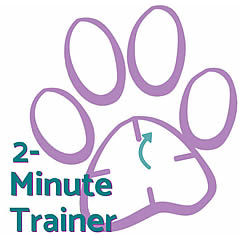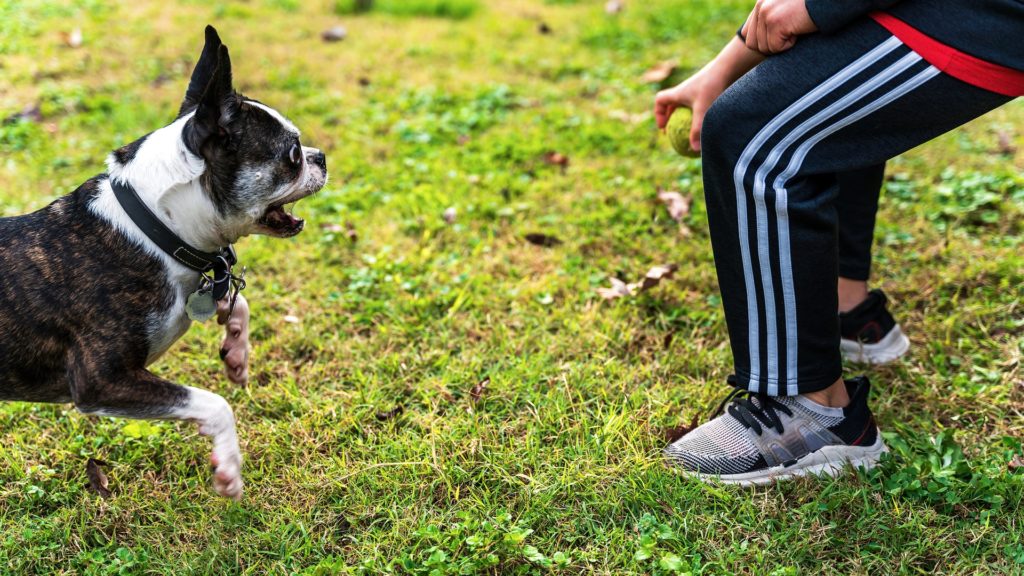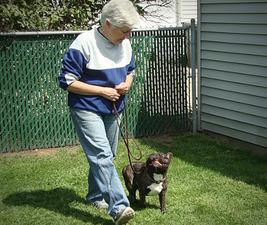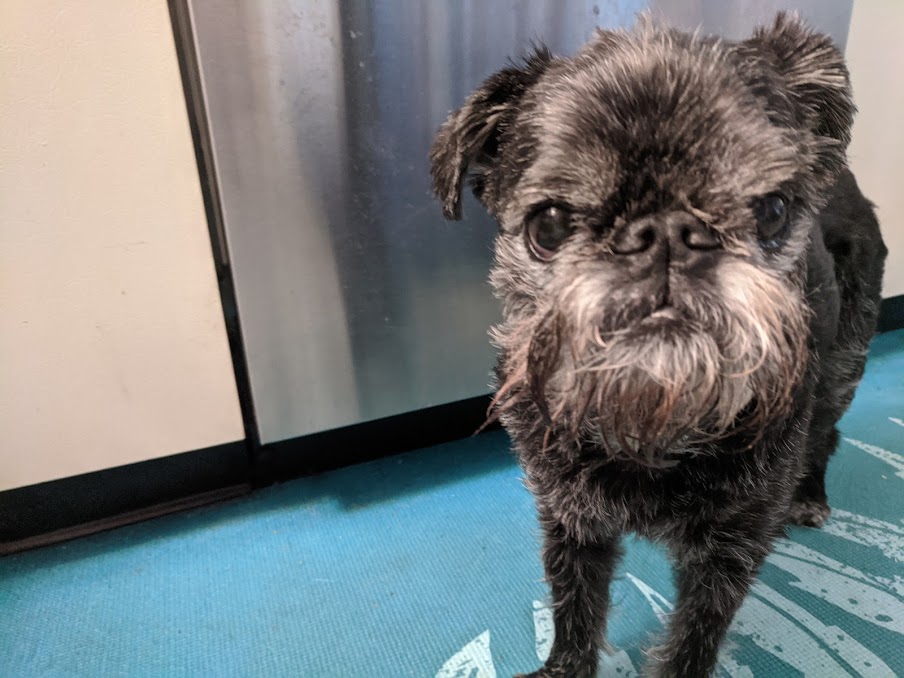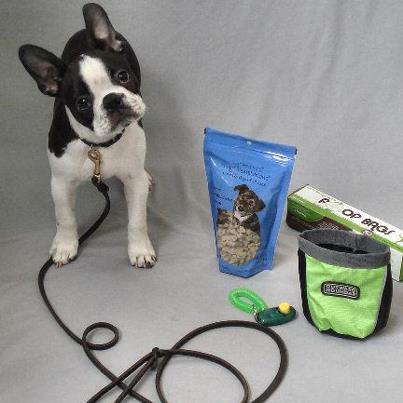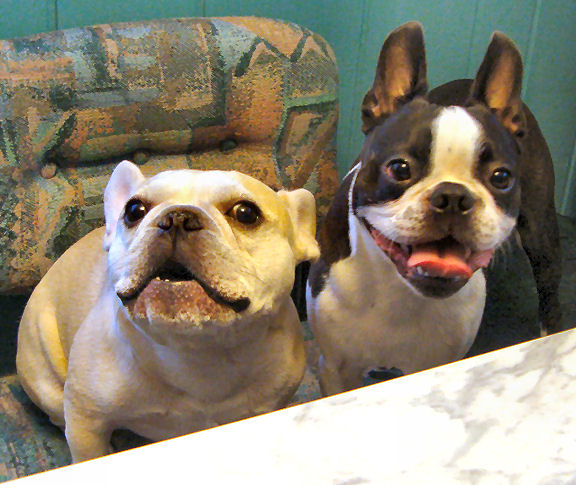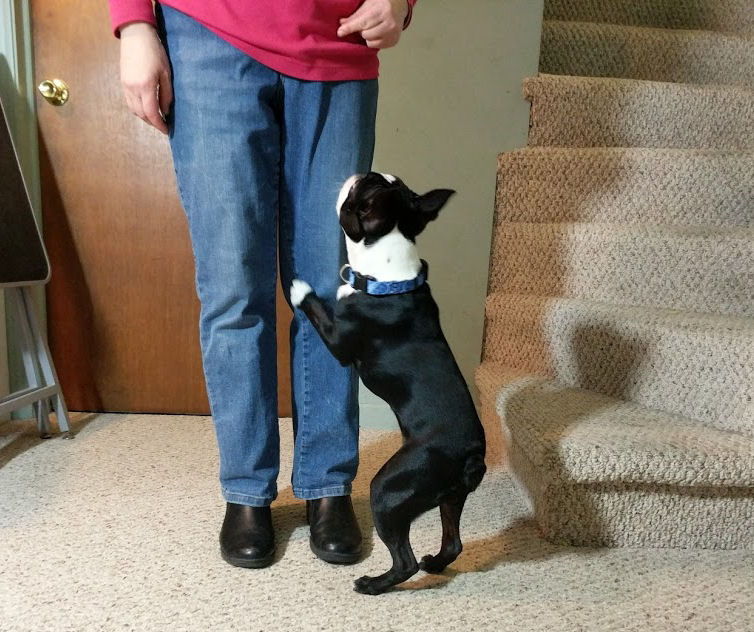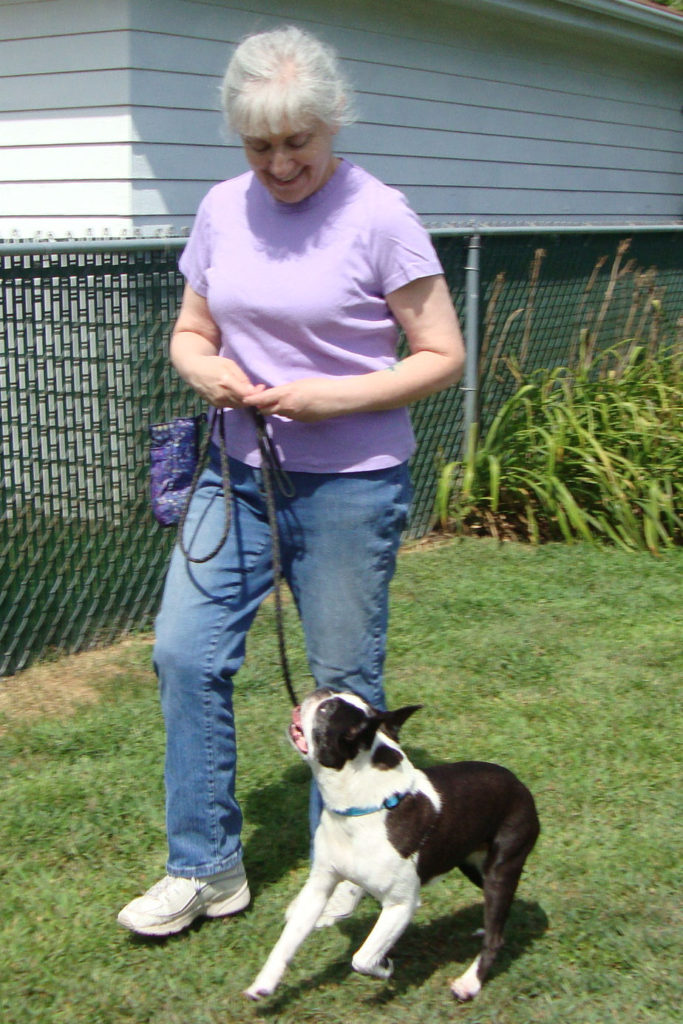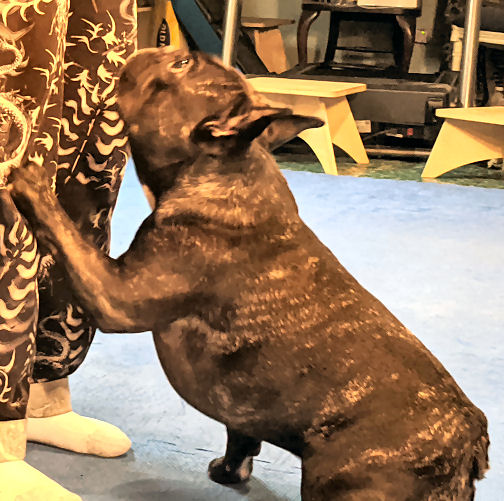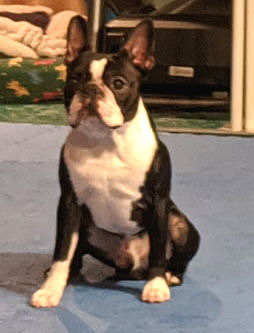Dog training nuggets work best. Not chunks. Not whole banquets. Little bittie morsels of fun that let you enjoy moments with your dog. It’s playing structured demi-games that have the side benefit of bettering your bond and building their understanding.
Too big a chunk of anything will choke you. Even if it’s your most favorite food in the universe (chocolate!), you won’t enjoy too big a bite. And chances are, it’ll color your future impression of that food if you couldn’t digest it last time.
Components are key
Most people don’t realize how complex even simple behaviors are until they’re asked to break them apart. Take a simple dog game like “Fetch.” Lots of dogs, especially Retrievers, seem born knowing how to play. It goes with the whole “retrieve” part of the breed.
Other dogs, like French Bulldogs or Boston Terriers, don’t have a clue. That doesn’t mean they can’t or shouldn’t play. It just means we have to teach them.
As part of Obedience competition, one of the exercises in the second level is fetching a dumbbell. Whether you want to play fetch in the backyard with a tennis ball, or step into the competition venue, the basics are the same:
Dog has to:
- Wait while you throw.
- Pay attention to the flight of the object.
- Run to get the object.
- Find the object on the ground.
- Pick up the object.
- Hold the object.
- Run back to you while holding it.
- Drop the object when asked.

Who would have believed there are that many steps to such a simple game? The Retriever may jump ahead to the end of the story. But the French Bulldog may have to play each step as a separate game, learning and being rewarded at each step. Breaking a behavior down into its tiniest steps is one of the building blocks of the 2-Minute Training Method, as introduced in Your 2-Minute Training Journey.
Does it take long? No. The first step, waiting while you throw, builds on your “stay” command and probably won’t take more than one or two 2-Minute games. None of the steps takes long by itself. Because you have a clear focus for the game and you know when your dog achieves the goal.
Keep the goal in mind
The success of your 2-Minute Dog Training depends on keeping all the training game nuggets easy to digest. It’s fun to play “Take it!” with a dumbbell for two minutes. It’s horrendously dull and demotivating to do it for an hour.
And just because the eventual game of “Fetch” is played in this order, you don’t have to play the game’s steps in that order. If your dog understands each little nugget, it doesn’t matter what order you play them. If your dog is confident in all bits of the game, he’ll always be happy to come to the training feast.
